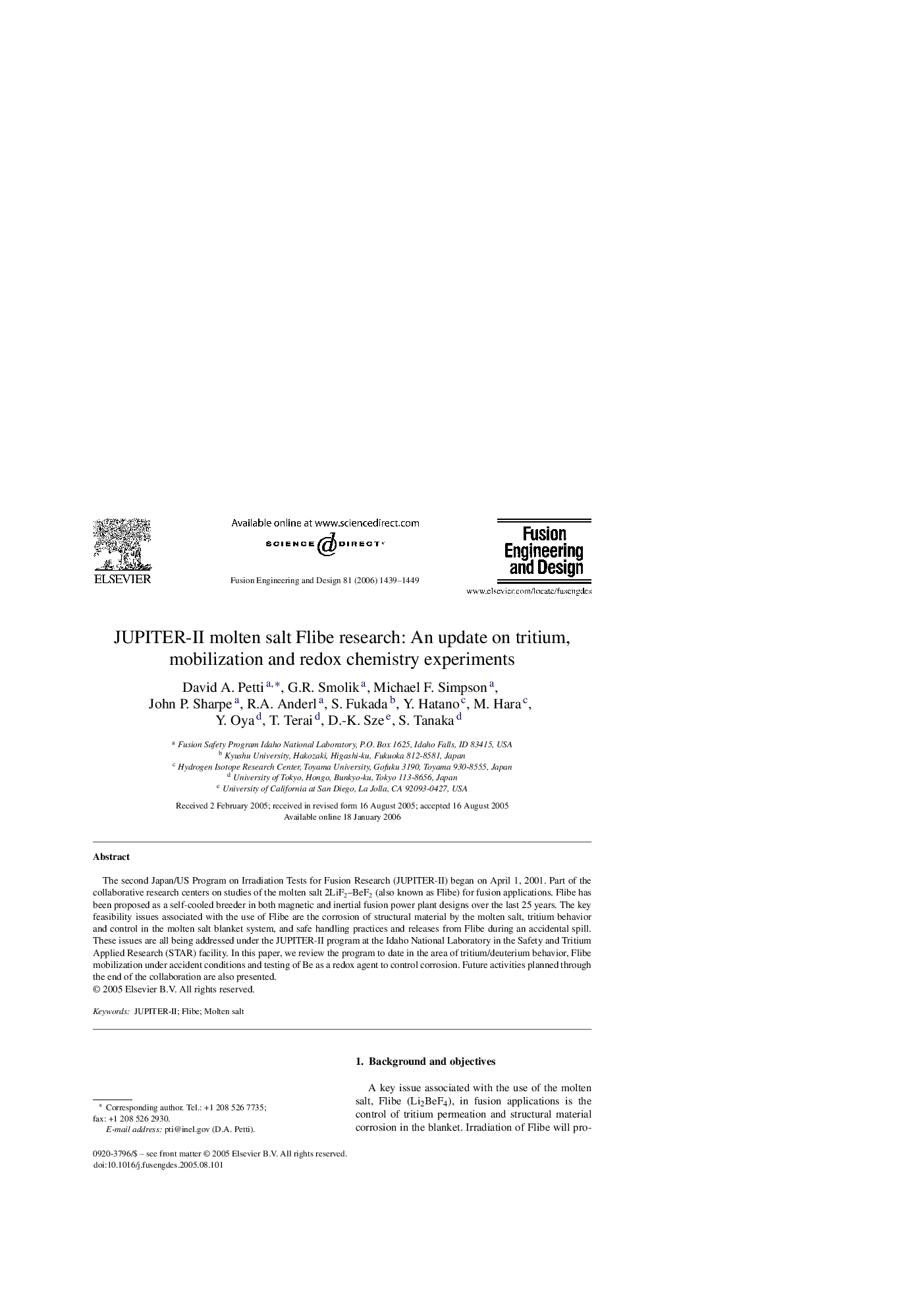| Article ID | Journal | Published Year | Pages | File Type |
|---|---|---|---|---|
| 273897 | Fusion Engineering and Design | 2006 | 11 Pages |
The second Japan/US Program on Irradiation Tests for Fusion Research (JUPITER-II) began on April 1, 2001. Part of the collaborative research centers on studies of the molten salt 2LiF2–BeF2 (also known as Flibe) for fusion applications. Flibe has been proposed as a self-cooled breeder in both magnetic and inertial fusion power plant designs over the last 25 years. The key feasibility issues associated with the use of Flibe are the corrosion of structural material by the molten salt, tritium behavior and control in the molten salt blanket system, and safe handling practices and releases from Flibe during an accidental spill. These issues are all being addressed under the JUPITER-II program at the Idaho National Laboratory in the Safety and Tritium Applied Research (STAR) facility. In this paper, we review the program to date in the area of tritium/deuterium behavior, Flibe mobilization under accident conditions and testing of Be as a redox agent to control corrosion. Future activities planned through the end of the collaboration are also presented.
